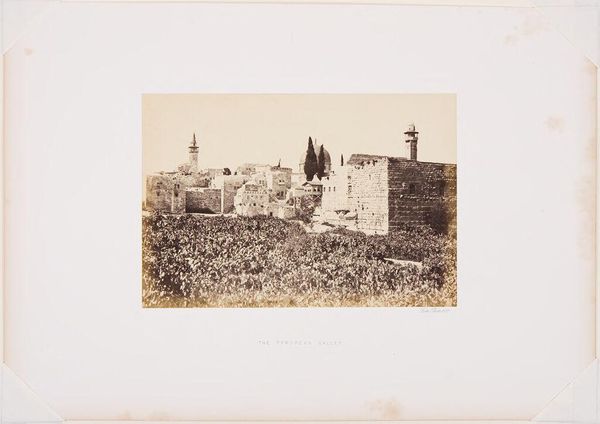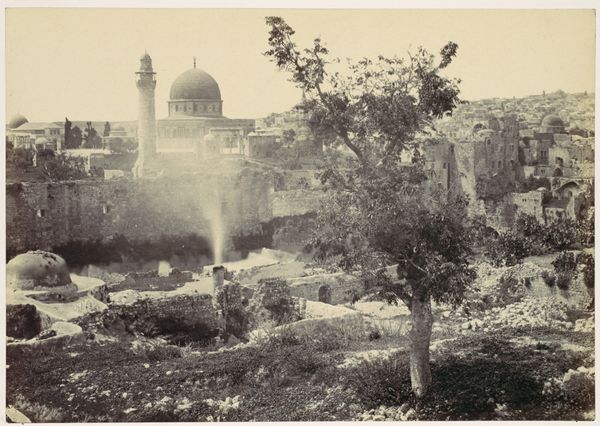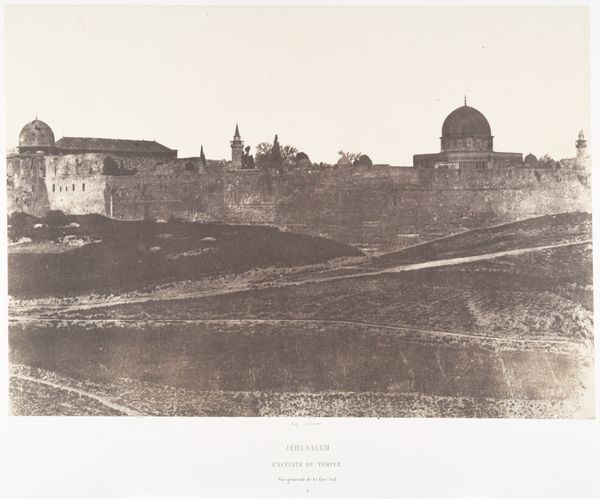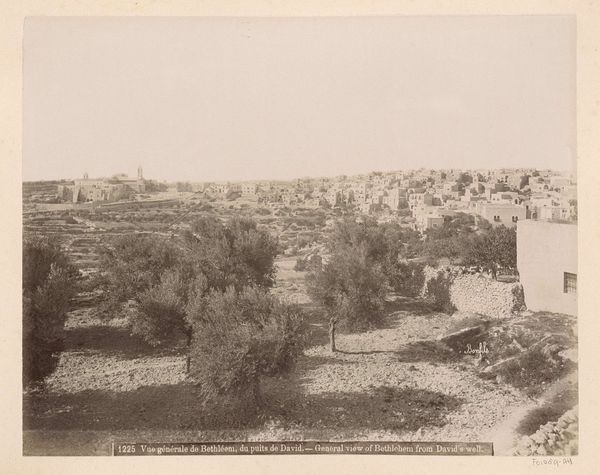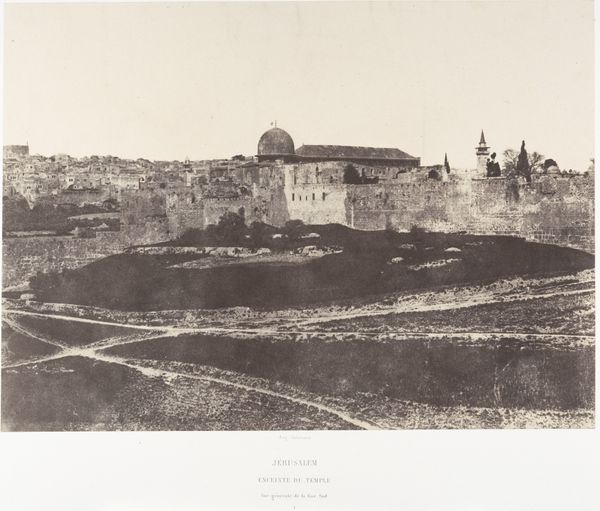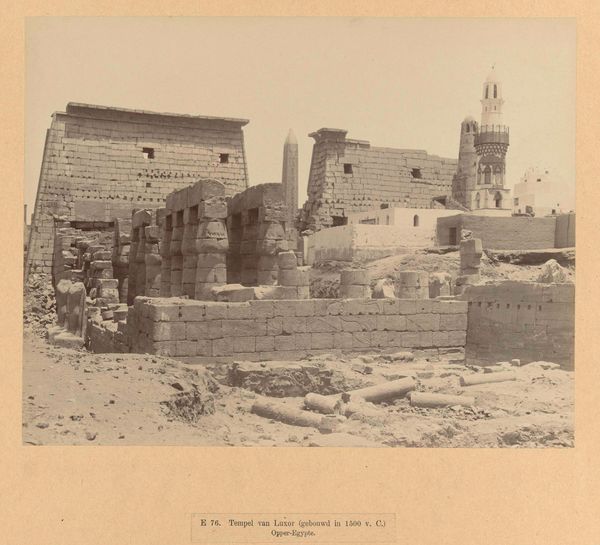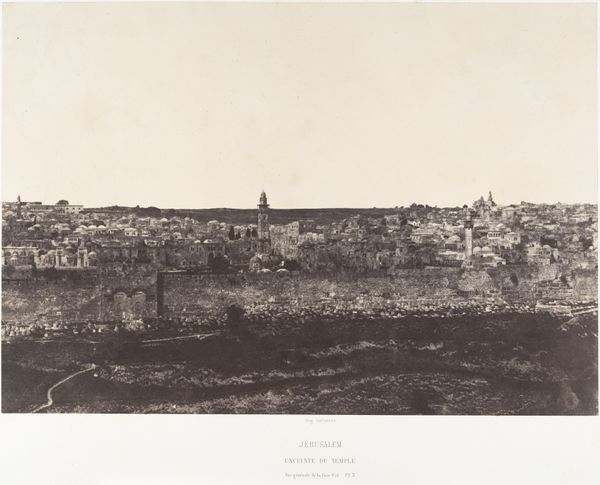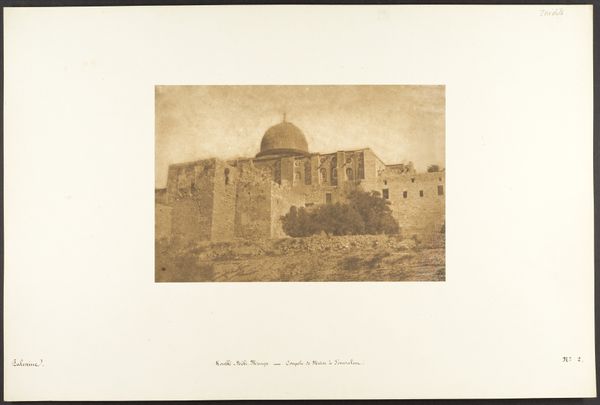
Gezicht op de baden van Bethesda in Jeruzalem, in de verte de Rotskoepelmoskee 1857 - 1858
0:00
0:00
francisfrith
Rijksmuseum
photography, gelatin-silver-print
#
16_19th-century
#
landscape
#
photography
#
orientalism
#
gelatin-silver-print
Dimensions: height 241 mm, width 313 mm
Copyright: Rijks Museum: Open Domain
Editor: So this is Francis Frith's "View of the Pools of Bethesda in Jerusalem, in the distance the Dome of the Rock Mosque," taken around 1857-1858. It’s a gelatin silver print. I’m immediately struck by how...hazy it looks. What can you tell me about this piece? Curator: Let's consider the materials. The gelatin silver process itself—a relatively new technology at the time— allowed for mass production. Think about the socio-economic implications of that. Frith wasn't just making art, he was creating a commodity, shaping European perceptions of the East through reproducible images. Editor: So, you're saying the *how* is as important as the *what* in the photograph? Curator: Absolutely. The very act of photographing Jerusalem, transporting the equipment, developing the images in the field – it all speaks to the ambition of 19th-century industrial enterprise and its impact on global cultures. And consider Frith’s choice of subject. Why this particular view? Editor: Well, Bethesda has religious significance. But, placing it in the context of industrialism… perhaps Frith was documenting a land ripe for Western eyes? Curator: Precisely! He is packaging the "Holy Land" for consumption. And let’s think about the laborers involved – from those who mined the silver for the printing process, to those who distributed the prints back in Europe. Editor: So, it's less about the artistry and more about the labor and the system that enabled its creation? Curator: The artistry *is* in that system. Frith became wealthy because of it. It challenges our ideas about art as separate from industrial systems. Editor: I hadn’t thought about it that way before! It really opens up a new way to view not just this photograph but the entire era. Curator: Exactly. By analyzing the production and distribution, we unearth a much richer understanding of the image and its role in shaping historical narratives.
Comments
No comments
Be the first to comment and join the conversation on the ultimate creative platform.

